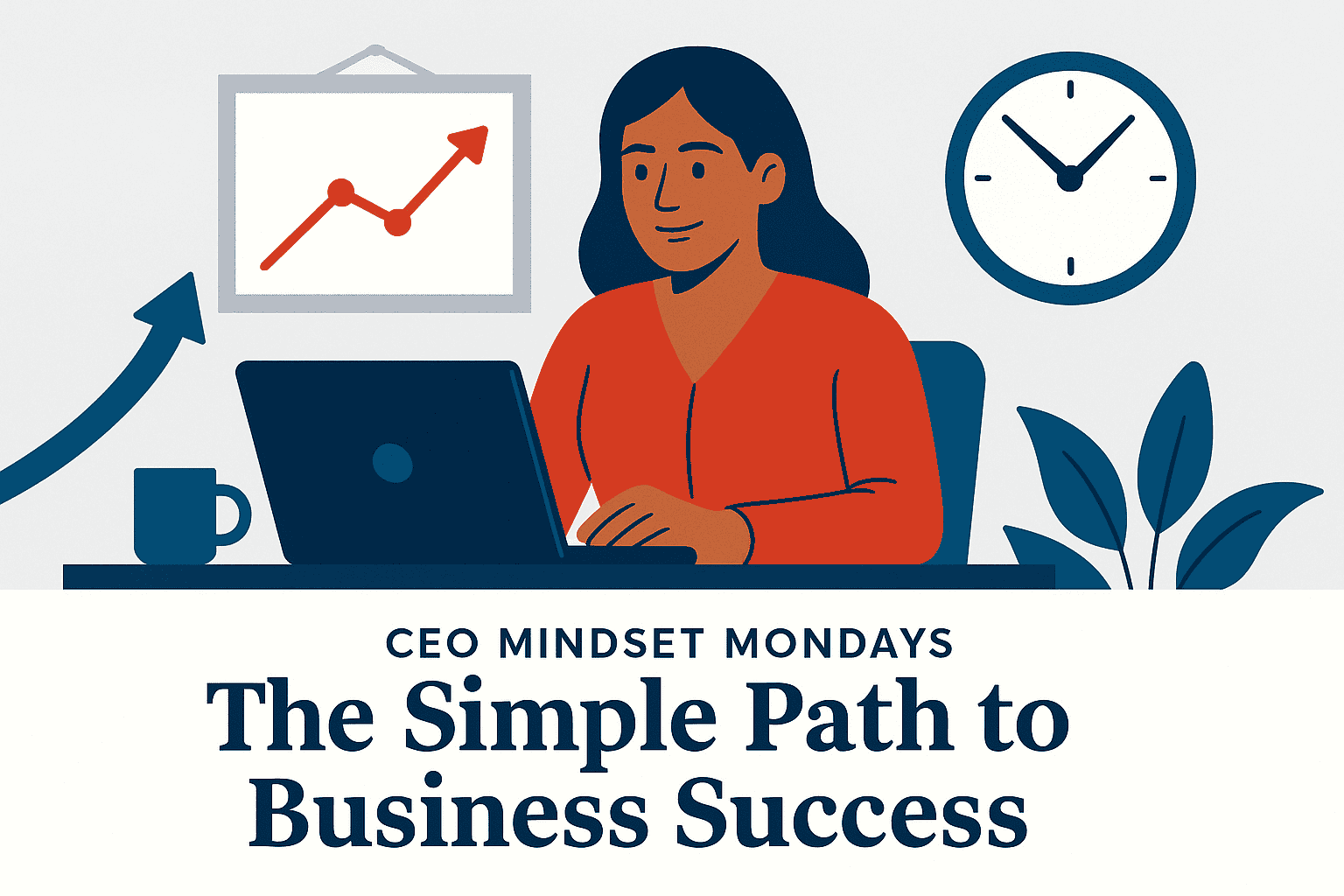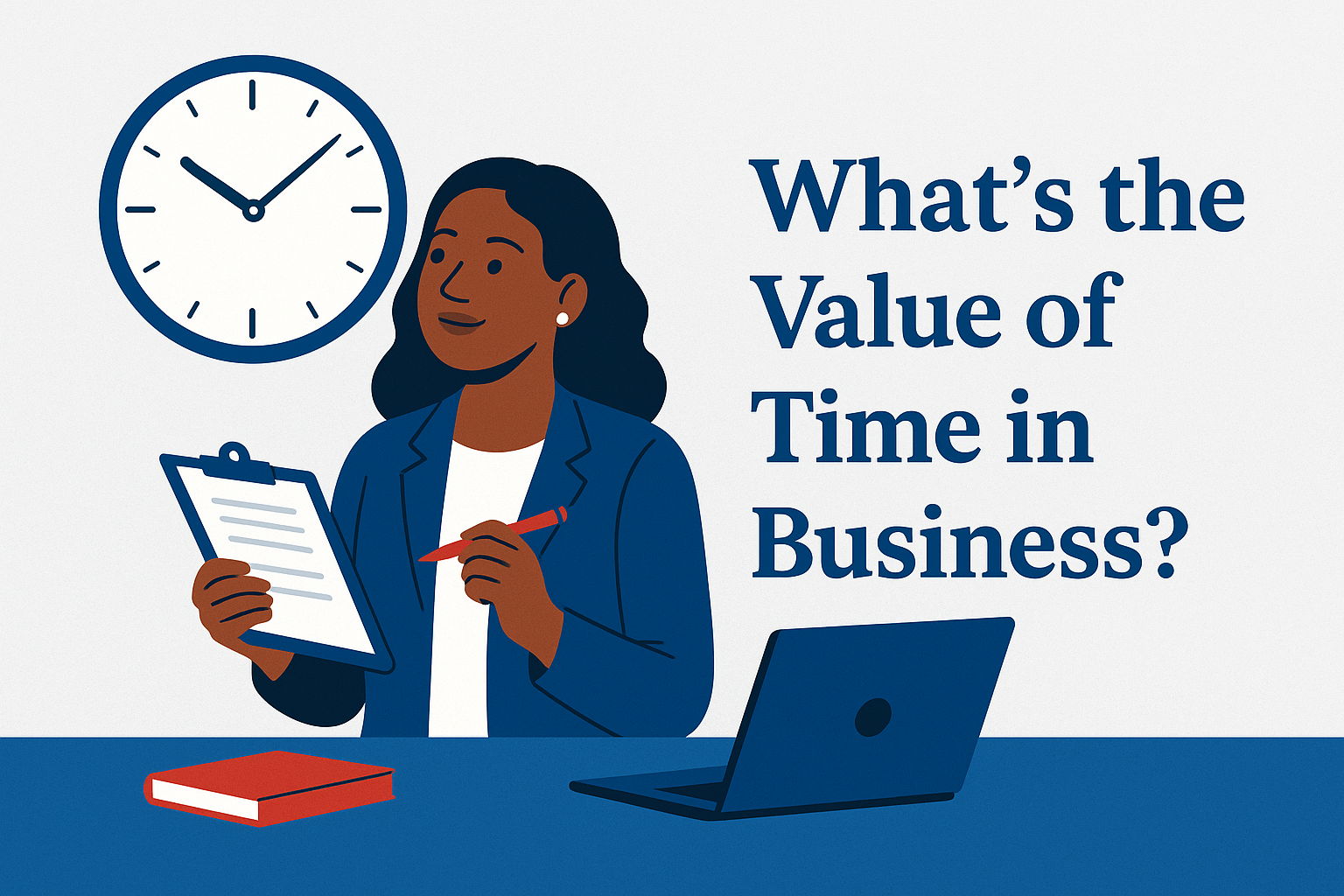CEO Mindset Monday
Have you ever held onto an idea so clearly, so confidently, that it felt like a breakthrough—only for it to be ignored, dismissed, or worse, repurposed by someone else?
That’s what visionary leadership often feels like when you’re still inside someone else’s system. You know what could work. You see the potential. But you’re stuck asking for permission to lead.
That’s where I found myself time and time again. Even in a role that values strategy and process, I’ve felt the sting of being overlooked. I’ve shared ideas that were met with silence, only to see them resurface later, rebranded as someone else’s insight. It’s frustrating. Disorienting. But it reminded me of why I revived Backbone America.
In my business, when I have a vision, I can follow it. I don’t have to fight to be heard—I just have to listen to my own clarity. That’s the power of visionary leadership. It’s not about being right all the time. It’s about trusting your instincts, moving forward even when others doubt you, and owning the outcome—whether it works or not.
It can be lonely. But it’s also empowering. And that’s where real leadership begins.
What Visionary Leadership Really Means

A lot of people mistake it for charisma. For having big ideas, or delivering speeches that rally the crowd. But that’s not the kind of leadership most of us are called into—especially those of us building businesses from scratch.
In real life, visionary leadership often looks like this:
Making decisions against the grain
Building before there’s proof it will work
Carrying an idea through awkward, unvalidated stages
Staying anchored in your direction while adapting the details
Sometimes, it’s exciting. Sometimes, it’s terrifying. Most of the time, it’s quiet and can have tendrils of doubt.
What makes it visionary is that you’re not reacting to what is—you’re responding to what could be. That difference is subtle, but everything hinges on it. Because if you’re only focused on what’s in front of you, you’ll keep recreating what already exists. But if you’re willing to trust what’s unfolding—even before others agree—you get to shape something truly new.
That’s not easy. Especially if you’ve spent most of your professional life inside structures where risk was punished and initiative had limits. But it’s part of the shift from employee to entrepreneur. And it’s part of growing into the kind of leader who doesn’t just see more—but can carry more too.
The Loneliness of Going First
Here’s something people rarely admit out loud: visionary leadership often feels like a solo hike through fog.
You’re out front—not because you’re better or braver, but because you saw the spark a little sooner. That early clarity can feel like a gift… until you realize how alone it is out there.
When you’re leading with vision, there’s often no applause. No nods of approval. Just quiet. And sometimes, that quiet feels loaded—like people are standing on the sidelines, not to support, but to see if you’ll fall.
You start to look for signs that you’re on the right path—any glimmer that the risk is worth it. But in the early days, those signs don’t always come. So you push forward anyway—anchored not by certainty, but by instinct. By commitment. By a quiet knowing that even if no one else sees it yet, you do.
And sometimes, that’s enough.
In truth, that’s also the part that shakes people.
Because most of us have been trained to seek consensus.
We were rewarded for groupthink, not trailblazing. In jobs, we learn to wait for approval, to present an airtight case, to only speak up when we’re sure it will land well.
But visionary leadership doesn’t work like that. You don’t wait for permission. You go first.
Pitch the new offer. Test the process. And say what needs to be said. Sometimes… no one responds. Or worse, they dismiss it outright.
I’ll admit—sometimes it makes me second-guess myself. I replay the conversations. Sometimes I wonder why they don’t believe in me. I wonder if I should hold back. But then I remember what I saw. I look at the idea again—not through their eyes, but through my own. And I get a little more grit. A little more fuel.
Because sometimes…
We have to be our own biggest cheerleader.
Facing naysayers and doubters doesn’t mean the vision is wrong. Sometimes, it just means you’re early—ahead of the game.

That’s something I had to learn the hard way. Whether I was offering a new service inside Backbone America or proposing a streamlined approach at work, there were moments I walked away wondering if I should’ve just stayed quiet. But looking back—seeing those same ideas later resurface, sometimes repurposed word for word—chipped away at the doubt.
Visionary leadership means stepping into the unknown, despite the doubt and the friction. Not because you’re sure it’ll work. But because you trust the vision enough to try.
The Emotional Toll of Visionary Leadership (and Why It’s Worth It)
There’s a weight to visionary leadership that no one talks about until you’re in it.
It’s not just the work—it’s the isolation. The second-guessing. The mental load of seeing something valuable in an idea and not knowing if anyone else ever will. And for me, the agonizing wait to see the proof. There’s no roadmap. No guaranteed return. Just this tug-of-war between belief and uncertainty.
Some days you feel unstoppable. Other days, you wonder what made you think you could do this at all.
That’s the emotional tax of going first.
And still—despite all of it—it’s worth it. Because when that vision does start to take shape, when the idea becomes something others can finally see, the momentum shifts. People don’t just hear you—they follow you. They trust you. Not because you proved them wrong, but because you proved yourself right.
But here’s the key: that moment doesn’t come unless you keep going through the quiet parts.
For me, the reward hasn’t just been launching offers or hearing someone say yes—it’s been reclaiming my confidence. Rebuilding Backbone America wasn’t just about building a business. It was about choosing to believe my insight was valid, even if no one else recognized it at first.
And honestly, that belief? That’s the foundation I stand on now. Not the wins, not the numbers—but the decision to trust myself when it would’ve been easier to shrink.
Visionary leadership stretches you. But it also strengthens you in ways comfort never will.
What Helps During the Lonely Season
The hardest part about visionary leadership isn’t dreaming big—it’s staying steady while you wait for the vision to take root.
Because when you’re carrying something new, the world around you often hasn’t caught up. There’s silence. Doubt. Days where even you question whether you’re still on track. In those moments, motivation isn’t enough. You need structure. Anchors. Tools that can hold you when belief feels fragile.
Here’s what helped me most:
1. Grounding my days in alignment—not urgency
Instead of chasing proof or pushing myself harder, I started asking different questions:
- Is this aligned with where I’m going?
- Is this rooted in the version of me I’m becoming?
That shift helped me stay calm. Not passive—but grounded. I moved with intention, not intensity.
2. Using tools that support quiet consistency

Help prioritize what actually matters
Keep your momentum when motivation dips
Create consistency during emotionally unpredictable seasons
This toolkit wasn’t designed to impress anyone. It was designed to hold me together when I felt scattered and invisible. If you’re in that phase, I built it for you too.
3. Seeking perspective—not permission
I stopped asking people to agree with my direction. Instead, I started filtering feedback through alignment: Does this help me stay true to the future I’m building? If not, I let it go.
And slowly, I learned how to hear my own voice louder than the noise.
If you’re navigating that silence right now, I recommend this Psychology Today article. It explores how emotional and physical well-being directly impacts your capacity for visionary leadership—especially during seasons when you’re leading without external validation. It’s a powerful reminder that maintaining your inner vitality isn’t just self-care—it’s strategy.
3. Looking to the right examples
I stopped taking advice from people who hadn’t walked this path. Instead, I started looking at leaders who moved anyway—even when the world said no. Like Melissa Butler, who created The Lip Bar long before clean beauty was trending. She pitched it on Shark Tank and got rejected, but kept going. Now her brand’s in Target.
That kind of visionary leadership—the kind that trusts the vision before it makes sense to everyone else—is what reminds me I’m not alone.
Redefining Progress While No One’s Watching

- Not all progress is visible.
- Not all growth is loud.
- And not all success comes with a clear, measurable win.
When you’re practicing visionary leadership, progress often feels like it’s happening underground. There’s no applause. No metrics. Just you—building something others don’t understand yet, hoping the foundation holds.
That’s why I had to stop measuring progress the way I used to
Not by likes.
Not by revenue.
Not by how many people said yes.
But by alignment.
- Did I stay true to the vision I’m carrying?
- Did I move in the direction that reflects who I’m becoming?
Eventually, I stopped looking for confirmation—and started looking for congruence. Was I living in integrity with the future I was building?
That became my metric.
It’s not always easy to track that kind of progress. But it’s real. And over time, it adds up—one courageous choice, one quiet moment of clarity at a time.
If you’re in that place right now—don’t rush it. This part is shaping you. Teaching you how to lead without applause, which is exactly what will make you steady when the spotlight finally hits.
Ready to Lead Without Applause?
Visionary leadership doesn’t always look like success on the outside. But the inner work—the quiet choices, the grounded habits, the commitment to keep going even when no one else sees it—that’s what separates dabblers from builders.
If you’re in that season where the vision feels clear but the feedback is silent, you don’t need to push harder.
You need a structure that supports your focus, not just your output.

It includes tools I use myself—like the Power Planner, the Growth Habit Guide, and templates to help you stay anchored in your vision while you build. No fluff. Just systems that hold you steady so you can lead with clarity, even when the noise around you fades.
Because staying aligned when no one’s watching?
That’s the kind of leadership that lasts.






